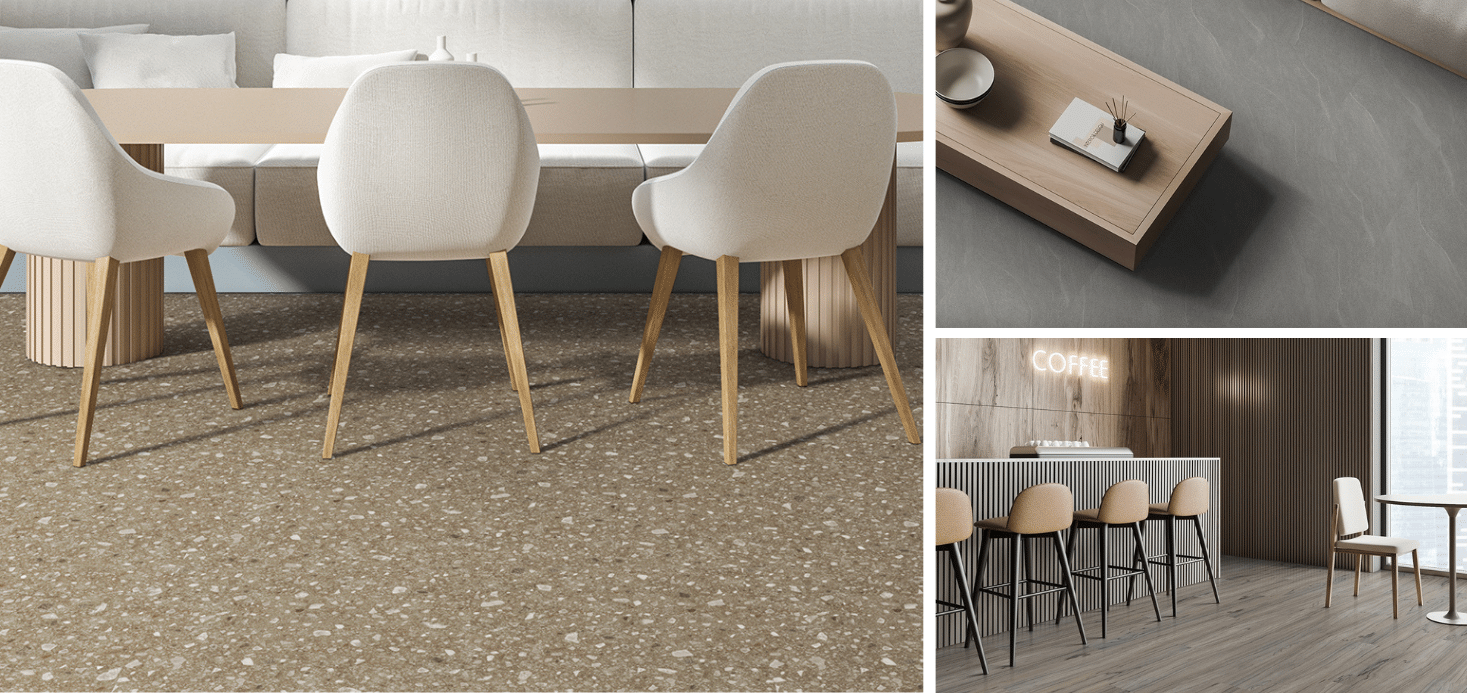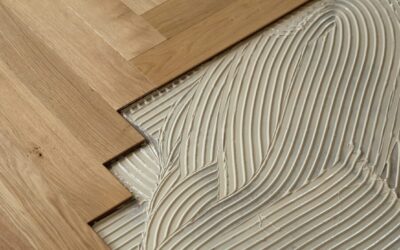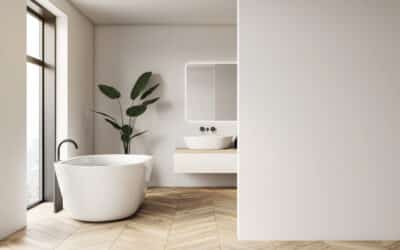Editor’s Note:
Joe Polito is the Vice President of Product Development at TAJ Flooring and has worked in the commercial flooring industry for over 30 years. In this post, he shares a practical overview of today’s most widely used resilient flooring types, including where they work best and why.
If you’re specifying flooring for commercial use, this guide offers insight from someone who’s spent decades developing and recommending products that perform.
When specifying flooring for commercial environments, form and function are rarely separate conversations. Every space — whether designed for productivity, wellness, learning, or hospitality — comes with specific expectations for durability, maintenance, and design continuity.
That’s why materials that deliver long-term performance without compromising visual quality are central to commercial flooring decisions. For example, luxury vinyl tile and plank (LVT/LVP) collections that feature contemporary visuals across multiple thicknesses give designers the flexibility to meet aesthetic goals in different environments — all while maintaining long-term durability.
This guide breaks down the most widely used resilient flooring options for commercial spaces and how to determine the right fit for your application.
How to Specify Resilient Flooring
Choosing the right resilient flooring for a commercial space depends on more than just visual appeal. Here are a few core performance considerations that help guide material selection:
- Durability: Commercial settings demand flooring that can withstand wear from foot constant traffic, carts, and furniture and fixtures. Rigid core products and reinforced sheet vinyl often perform best in high-impact zones.
- Moisture Resistance: In environments like healthcare or food service, seamless sheet vinyl helps prevent moisture intrusion while LVT and rigid core options offer waterproof construction ideal for transitional zones or break rooms.
- Acoustic Control: Attached pad systems in rigid core click flooring and acoustic layers in thicker LVT formats help reduce sound transfer in open-plan offices and multi-use spaces.
- Hygiene: Antimicrobial surface treatments and low-maintenance finishes are increasingly important in spaces designed for wellness or healthcare.
- Installation Conditions: Quick timelines, uneven subfloors, or occupied renovations may benefit from floating click systems over glue-down methods.
Each format offers distinct advantages. Matching product capabilities to the specific use and conditions of a space ensures better long-term performance.
Luxury Vinyl Flooring (LVT/LVP)
Luxury vinyl flooring continues to lead in commercial specification for one reason: it checks every box. From mixed-use developments to healthcare facilities, LVT delivers durability, design flexibility, and ease of installation, all in one material category.
With advancements in wear layers, finishes, and acoustic backing options, LVT is no longer a substitute for higher-end surfaces but often the preferred choice.
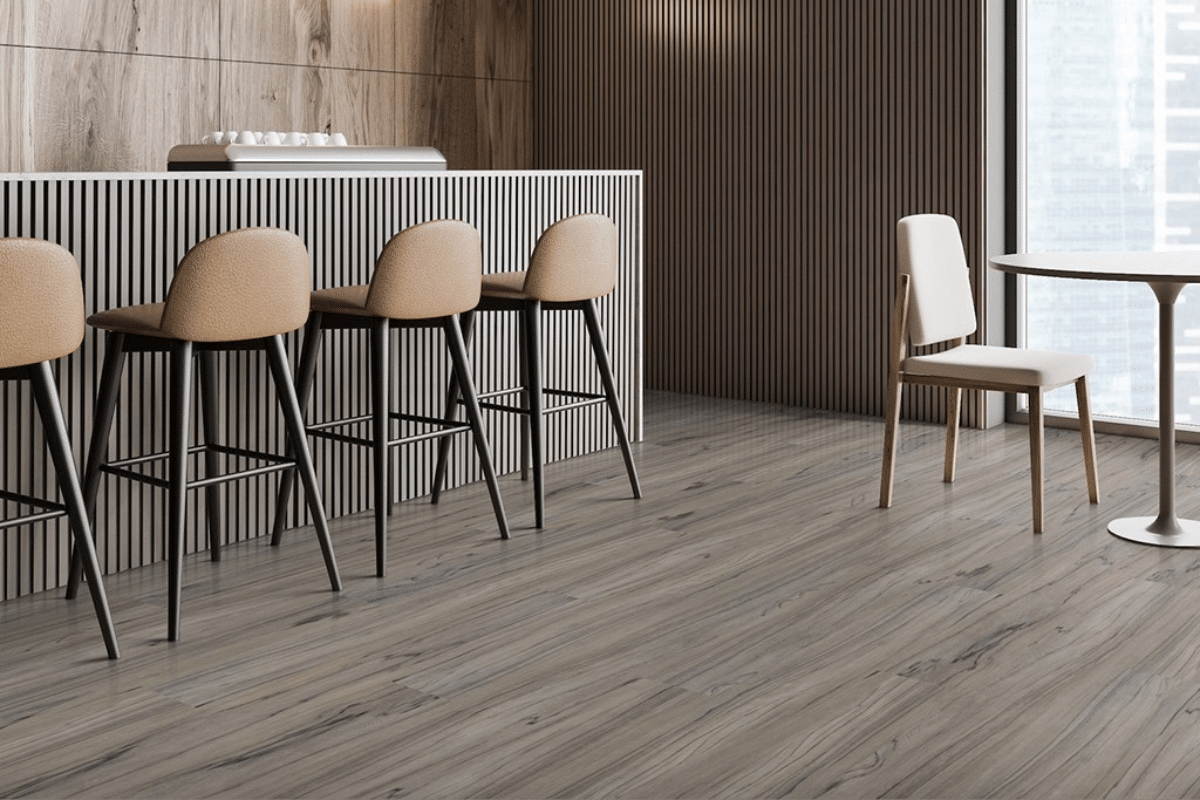
Visually, LVT replicates the organic textures of hardwood, stone, and concrete with impressive realism. Digitally printed films and embossed-in-register surface textures create dimension and authenticity, which helps support consistent design themes across larger footprints.
And because it’s produced in both tile and plank formats, it can suit everything from corridors and kitchens to open-plan lounges and wellness areas.
With a range of thicknesses available, LVT can be matched to both design intent and technical requirements across a space. Thinner formats are commonly used in vertical applications or areas with tight height tolerances, while thicker constructions support acoustic performance and allow smooth transitions between different flooring materials, like carpet tile or raised access panels.
Additional features, such as ceramic-bead finishes, waterproof construction, and antimicrobial treatments, make LVT a fit for environments where hygiene and long-term wear are just as important as visual continuity.
The global LVT market is projected to grow at a rate of 8.8% annually through 2031, driven by demand for materials that combine design flexibility with long-term durability.
Commercial sectors, in particular, are fueling this growth as developers and facility managers prioritize surfaces that withstand foot traffic, reduce maintenance needs, and support cohesive aesthetics across multiple environments.
Where to use:
- Mixed-use developments
- Office suites and corridors
- Senior living and healthcare
- Student housing and education
Why it works:
- Moisture-resistant construction
- Broad visual range
- Multiple thickness formats
- Optional acoustic backing
- Easy to install, clean and maintain
In many commercial environments, LVT offers a solution where other materials may fall short. It provides the warmth of wood without the susceptibility to moisture, durability without the installation complexity, and the design depth that vinyl composition tile (VCT) typically lacks.
Its ability to unify design across multiple functional zones makes it a practical choice for projects that need to balance aesthetics with day-to-day performance.
Sheet Vinyl
Sheet vinyl remains a staple in commercial design for its seamless application, water resistance, and hygienic benefits. Unlike modular flooring, sheet vinyl can be installed with heat-welded seams to create a continuous surface that blocks moisture and bacteria.
This construction makes it a common choice for healthcare, education, and wellness-focused facilities.
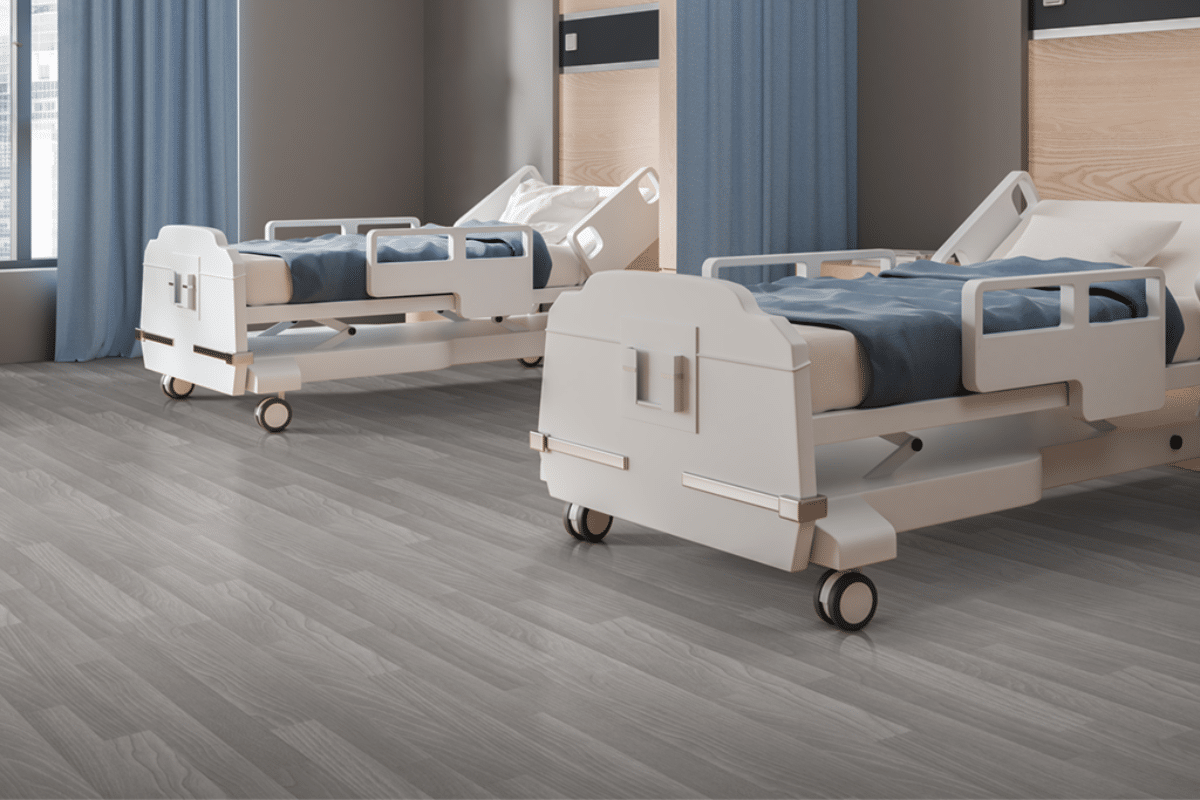
Today’s commercial-grade sheet vinyl features a variety of modern looks, from soft wood tones to subtle stone effects, supporting cohesive design from room to room. Some collections also offer coordinated LVT counterparts to ensure visual continuity in multi-surface projects.
Advanced product constructions include fiberglass reinforcement and antimicrobial finishes. Many feature UV-cured polyurethane coatings infused with ceramic bead technology for enhanced scratch resistance and stain protection, reducing the need for waxes or finishes over time.
Where to use:
- Patient rooms and corridors
- Medical offices and exam rooms
- Senior living communities
- Educational and multipurpose facilities
Why it works:
- Welded, hygienic seams
- Liquid-blocking surface
- Long-wear durability
- Scratch-resistant finish
- Wide-roll installation format
Rigid Core Click
Rigid core click flooring combines high-density performance with simplified installation.
Built with layered construction that often includes a polymer or stone-plastic core and a cushioned underlayment, this format provides dimensional stability, sound absorption, and comfort underfoot, especially valuable in fast-turnaround or mixed-use projects.
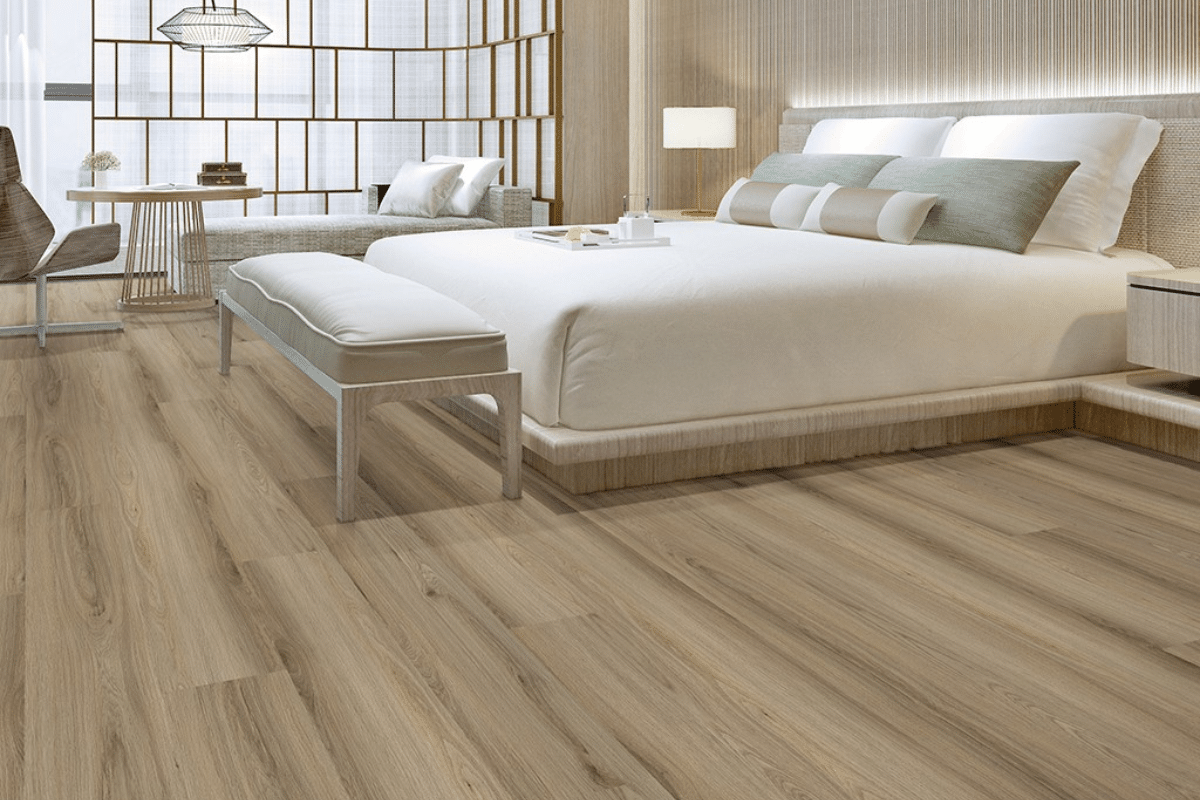
Its floating-click design — with drop-lock or angle-angle systems — makes it a fit for tight timelines, occupied renovations, or moisture-sensitive conditions. Rigid core click flooring is also phthalate-free and designed to resist water, scratches, and minor subfloor irregularities.
Thicker options (typically 5mm to 6mm plus attached pad) are increasingly favored in commercial interiors where durability, acoustics, and ease of maintenance are critical.
Where to use:
- Multifamily tenant units
- Hospitality guest rooms
- Boutique retail spaces
- Dormitories
Why it works:
- Adhesive-free installation
- Water- and dent-resistant core
- Integrated acoustic pad
- Phthalate-free composition
- Subfloor-tolerant structure
Current Design Trends in Resilient Flooring
Commercial flooring is no longer treated as a purely functional surface. More designers are specifying that they need resilient materials to reflect broader design themes — such as wellness, biophilia, and hospitality-inspired environments.
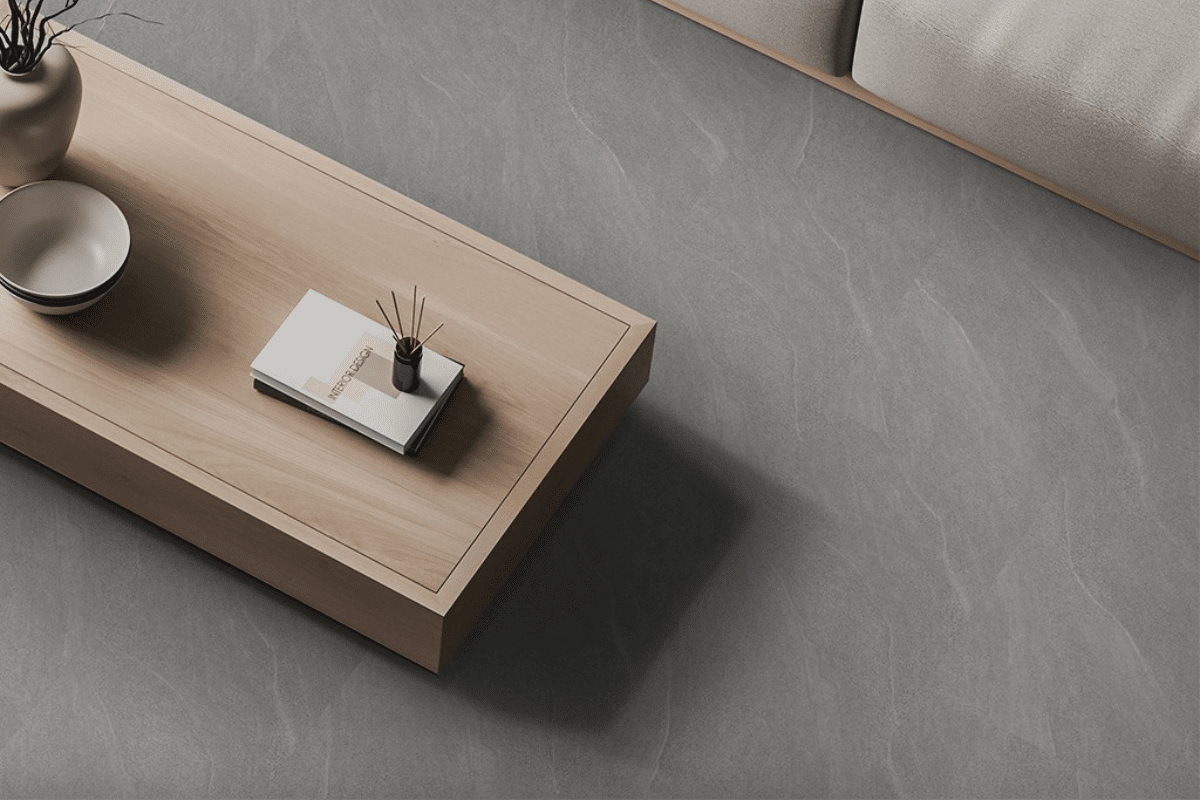
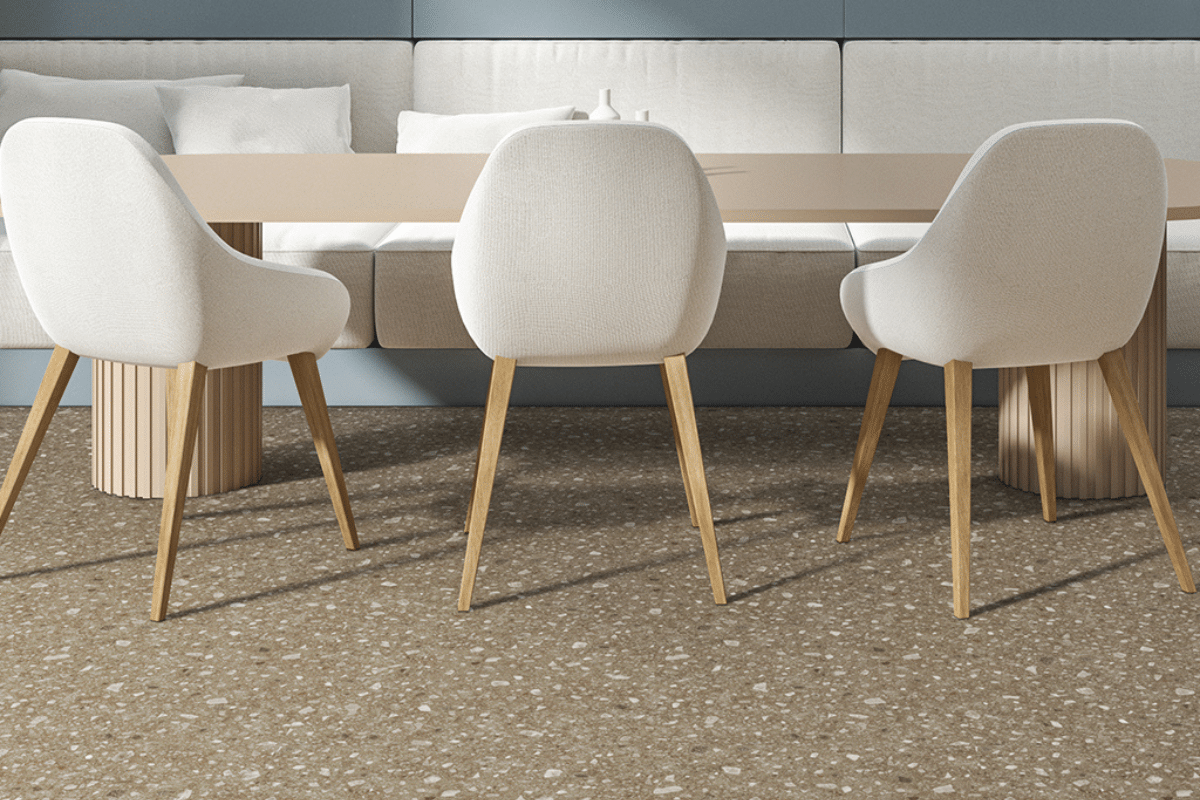
Wood visuals continue to lead, especially in warm, neutral tones that promote calm and cohesion across zones. Stone-inspired patterns with subtle textures are gaining traction in corporate and healthcare spaces for their ability to add depth without extra upkeep.
Advances in digital print technology also allow for nuanced detail, in the form of graining, weathering, and matte finishes.
Coordinated visuals across product formats, such as matching sheet vinyl and LVT in adjacent areas, make it easier to create seamless room-to-room transitions that elevate the overall aesthetic.
Final Considerations
No single material fits every commercial setting. A fitness studio may need comfort under foot, while a retail boutique prioritizes surface texture and brand alignment.
Factors such as traffic load, sound control, cleaning protocols, and visual continuity all play a part in the right flooring selection.
When evaluating resilient flooring for commercial spaces, it’s important to consider more than just visual preferences.
Application-specific needs, such as moisture exposure, acoustic comfort, ease of repair, and install timelines, should guide your material selection.
With multiple resilient formats available, specifiers have more flexibility than ever to align flooring with performance goals.
Whether you’re working within a phased construction schedule or designing for multiple user groups, resilient products support smarter, more adaptive spaces.
